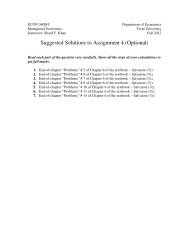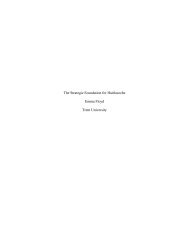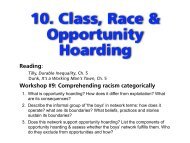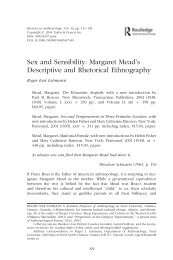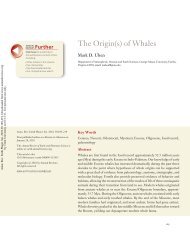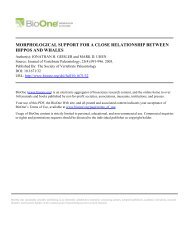REO FORTUNE'S PSYCHOLOGICAL THEORY OF CULTURAL ...
REO FORTUNE'S PSYCHOLOGICAL THEORY OF CULTURAL ...
REO FORTUNE'S PSYCHOLOGICAL THEORY OF CULTURAL ...
You also want an ePaper? Increase the reach of your titles
YUMPU automatically turns print PDFs into web optimized ePapers that Google loves.
Fortune’s Theory of Cultural Ambivalence<br />
291<br />
Admiralty, the Usiai” (Fortune 1935, 60). While the Usiai held these beings<br />
in earnest regard, the Manus considered them ridiculous characters and<br />
declared their disbelief. Yet<br />
in cases of serious illness, the Manus make use of tchinal derived<br />
exorcism of tchinal derived black magic. This use is generally<br />
secondary to the use of the customs of the Sir Ghost and ghost<br />
cult in order of trial, an order that is also an order of faith. The<br />
extraordinary thing, considering the legends, is that there is any<br />
place at all for the tchinal derived magic. (Fortune 1935: 60–61)<br />
Here Fortune identified beliefs and practices that were explicitly denied or<br />
ridiculed under normal circumstances, possibly because of their foreign<br />
source and challenge to local tradition. Fortune described this ambivalence<br />
in terms of conflicting practices, turned to as a last resort. Such moments<br />
of desperation reveal (or produce) beliefs and attitudes that are otherwise<br />
submergent or denied. Fortune did not, however, explore these matters<br />
theoretically for his Manus ethnography as he did in The Mind in Sleep.<br />
Finally, Fortune (1935, 254, 264) mentions the use of dreams by Usiai<br />
seers employed by the Manus as diagnosticians. Noting that for the Manus<br />
dreams represented accurate visions that might cause interpersonal conflicts,<br />
Fortune did not analyze them in terms he had laid out in his dream<br />
book.<br />
Fortune’s last book, Arapesh (1942), focuses on descriptive linguistics,<br />
supplemented with Arapesh texts and literal translations. This monograph<br />
reveals Fortune’s remarkable skill, not only as an ethnographer, but also as<br />
a linguist. He does not deal with the problem of dreaming and cultural<br />
ambivalence, evidently because his efforts focused on other problems.<br />
However, in his 1939 article, “Arapesh Warfare,” Fortune does take seriously<br />
the problem of reconciling individual and collective goals, to which<br />
he had attributed the evolutionary origin of dreaming in The Mind in<br />
Sleep:<br />
A balance was struck between individual values and collective<br />
values.... A war was promoted by individual initiative in the first<br />
instance, when one man coveted another man’s wife. . . . The<br />
woman had to be the wife of a man of a foreign locality. She had<br />
first to be seduced and to be found willing to run away from her<br />
husband. Her seducer had to possess the support of his clan,<br />
moiety, and locality in arranging for her elopement to himself.<br />
(Fortune 1939: 26–27)<br />
pacs-32-02-06.indd 291 9/7/2009 2:32:34 PM



